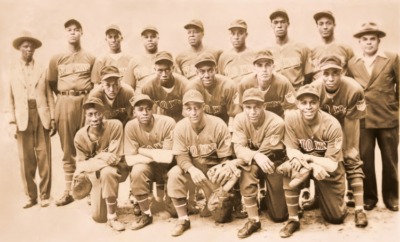Rotary Jail Museum Circles Back in Time

The jail in Crawfordsville is one of three rotary jails still standing in the U.S. Photo credit: Nathan Lambrecht
At the Rotary Jail Museum in Crawfordsville, Indiana, an innovative piece of architecture from the 1800s stands testament to a period of industrial advancement. The rotary jail was the first of only 18 ever built and one of three remaining in the country.
Thanks to preservation efforts by the Montgomery County Cultural Foundation, visitors can see the unusual jail in action and learn about its influence in Montgomery County at the time it was in use.
See more: 8 Things to Do In Middlebury, Indiana

Brittney Turpin leads a tour group through the Rotary Jail Museum in Crawfordsville. Photo credit: Nathan Lambrecht
Innovative Architecture
If You Go ...
Rotary Jail Museum
225 N. Washington St., Crawfordsville
The museum is open March through December. Check the website for seasonal hours.
Website: rotaryjailmuseum.org
Phone: 765-362-5222
The museum welcomes donations so visitors can continue to enjoy this piece of history. Donations can be mailed to P.O. Box 771, Crawfordsville, IN 47933 or email contactus@rotaryjailmuseum.org for additional options.
The rotary jail’s unique design was patented by architect William H. Brown and built by Haugh, Ketcham & Co. of Indianapolis. Situated atop a railroad turntable, the 20-ton mechanism is structured like a series of pies atop a lazy Susan. The wedge-shaped cells rotate atop the device to align entrances with exits.
This simple but innovative design allowed only one prisoner to come and go at a time, limiting contact between inmates and guards.
“The building was really considered ahead of its time,” says Brittney Turpin, executive director of the Montgomery County Cultural Foundation, which owns and operates the Rotary Jail Museum and Tannenbaum Cultural Center. “It’s a significant and important piece of Montgomery County and Crawfordsville history.”
Built in 1881, the Crawfordsville rotary jail served as the Montgomery County Jail for 91 years. Along with other rotary jails across the Midwest, the design was eventually discontinued due to humanitarian concerns.

Photo credit: Nathan Lambrecht
Convicted criminals weren’t the only people detained in the jail. The facility was occasionally home to runaway juveniles and individuals with mental health disorders, for whom no other facilities existed at the time.
“Anybody in the community that met those standards were all detained in the same facility,” Turpin says.
The Crawfordsville facility could house up to 37 inmates at any given time. Each cell was equipped with a bunk and toilet, with ventilation coming through the central shaft. Contact between prisoners was limited by solid walls between the cell blocks, but barred walls facing the round walkway made communication with other inmates and guards possible.
The rotary jail was considered unique even for its time – a product of industrial growth. All 18 jails were built within the 1880s, an impressive feat considering the technology of the time.
“It was innovative and interesting,” Turpin says. “It was something different.”
See more: 10 Things to Do This Fall in Greenfield

Visitors can watch a museum guide rotate the mechanism during their visit. Photo credit: Nathan Lambrecht
A Piece of History
Attached to the elegant-looking Montgomery County Jail and Sheriff’s Residence, the nature of the jail can hardly be detected from outside. Once within, visitors to the Rotary Jail Museum can understand what life in the jail must have been like throughout its operation. The rotary jail is still operational, and visitors can watch a museum guide rotate the mechanism during their visit.

Photo credit: Nathan Lambrecht
Only three rotary jails are still standing in the U.S., with the remaining 15 having been destroyed. While rotary jails were highly innovative for their time, communities eventually saw the need to discontinue their use. Documented injuries to inmates and advocates from local communities and beyond brought attention to the flaws of the jails.
“Some of them were in use for very limited amounts of time before the communities who built them saw what a hazard they could be and finally shut down their operations,” Turpin says. “At the time, making that decision was a community effort. It made an impression at the time to encourage those communities to do something different.”

Photo credit: Nathan Lambrecht
Modern Adaptations

Photo credit: Nathan Lambrecht
Along with the Rotary Jail Museum, the Montgomery County Cultural Foundation operates the Tannenbaum Cultural Center. The facility has a fascinating history of its own, having once been a steam plant, which provided heat to the jail and sheriff’s residence.
The center hosts arts classes, fundraisers and lectures. It also is available for the community to reserve for various events.
“That’s our way of promoting positive mental health in the community, to make sure that everybody feels like they have an option and they have a place to go,” Turpin says.
See more: Eiteljorg Museum Shares Amazing Stories of American Indians and Western Art













 My Indiana Home is produced for Indiana Farm Bureau members. Our mission is to connect you with the food you eat, the Indiana farmers who grow it and a rural lifestyle that is uniquely Hoosier.
My Indiana Home is produced for Indiana Farm Bureau members. Our mission is to connect you with the food you eat, the Indiana farmers who grow it and a rural lifestyle that is uniquely Hoosier.
Leave a Comment